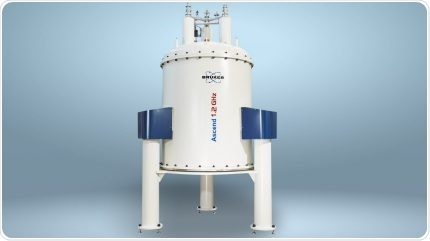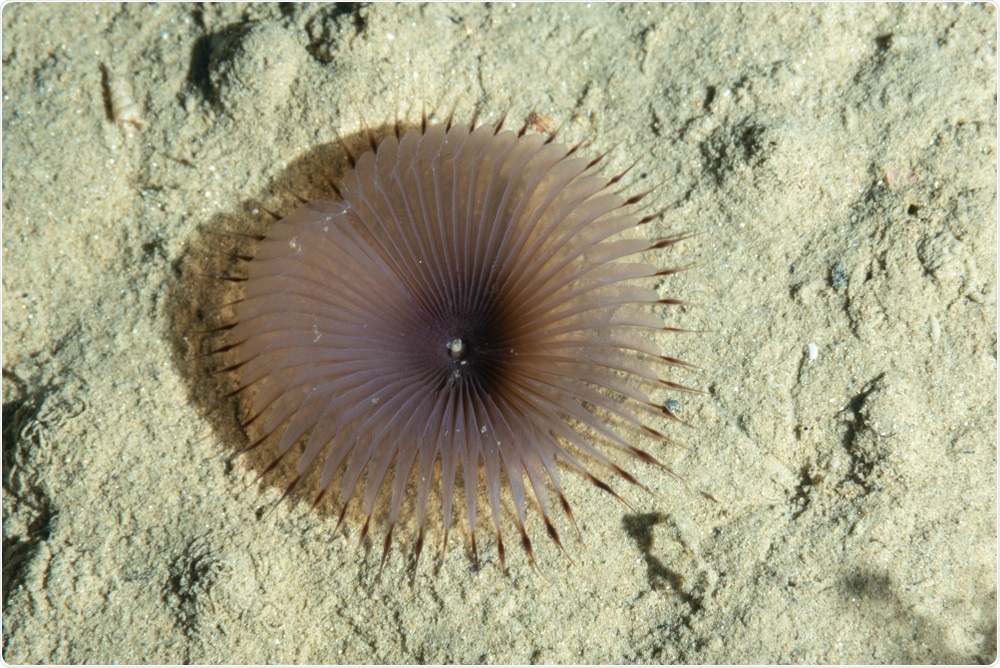Bruker’s Ascend series of superconducting magnets vary from 300 MHz up to the world-record-breaking 1.2 GHz level.
Easy siting
The Ascend magnet design is based on the latest superconductor technology. This allows smaller magnet coils to be designed, thus leading to a considerable decrease in physical size and weight.
Stability and shielding
The exclusive jointing technology used in the Ascend series results in the lowest drift rates for excellent field stability. Moreover, the External Disturbance Suppression (EDS) offers a screening efficiency of up to 99% against disturbances caused by an external magnetic field.
Features
Incorporating key technologies for best performance and cost-efficiency
The Ascend™ range of small-sized NMR magnets make medium- and high-field NMR spectroscopy very robust, as well as dependable and comfortable. Ascend magnets integrate a number of Bruker’s proprietary, novel magnet technologies for excellent performance and operational cost savings.
The Ascend magnet design is based on the latest superconductor technology, which allows the designing of smaller magnet coils, thus leading to a considerable decrease in magnetic stray fields and physical size. The Ascend magnets are thus simple to site while being cost-effective and convenient to run.

Image Credit: Bruker BioSpin - NMR, EPR and Imaging
Maximum performance
- Exclusive jointing technology ensures the lowest drift rates for excellent field stability
- Cryostats with outstanding thermal efficiency ensure low cryogen consumption
- Sophisticated shimming technology provided for maximum field homogeneity
- Comes with high-performance vibration isolators
- External Disturbance Suppression (EDS) offers a screening efficiency of up to 99% against external magnetic field disturbances
Minimum stray fields
- Smaller size and weight enable simple access to magnet and easy rigging
- Simple siting with lower preparation charges
- Reduced ceiling height needs
- Decreased physical and magnetic footprint in the laboratory
Ascend magnets have been improved for operation with Bruker’s room-temperature shim systems, Bruker NMR probes, automation technology and refrigeration equipment, for example, for combined high-performance NMR systems utilized in structural biology, small molecule and/or materials research applications.
Furthermore, Bruker’s Ascend magnets are available in two sizes of standard-bore with a diameter of 54 mm and a wide-bore with a diameter of 89 mm.
Benefits
The most advanced superconducting wire technology enables magnetic fields of up to 1.2 GHz to be achieved. Also, advanced superconductors allow designing NMR magnets that are very small, which, together with the reduction in the stray field by active shielding, is the main advantage when NMR systems must be positioned in space-constrained laboratories.
Bruker’s Electromagnetic Disturbance Suppression (EDS) offers outstanding screening efficiency against external magnetic field disturbances, which is perfect when an NMR spectrometer must be stationed in a difficult setting. The proprietary jointing technology from Bruker for high-current and high-field joints ensures the lowest drift rates.

Image Credit: Bruker BioSpin - NMR, EPR and Imaging
Operational cost savings
Source: Bruker BioSpin - NMR, EPR and Imaging
| Standard Bore Ascend Magnet |
Typical Helium Consumption |
| 400 MHz |
13 ml/h |
|
| 500 MHz |
13 ml/h |
| 600 MHz |
16 ml/h |
| 700 MHz |
26 ml/h |
| 800 MHz |
47 ml/h |
| 1.0 GHz |
<250 ml/h |
| 1.2 GHz |
<250 ml/h |
Applications
Discovering marine antibiotics using multidimensional NMR
An elaborate characterization of the mucus of the polychaete Myxicola infundibulum was recently completed. After identifying the elemental composition, a more comprehensive analysis was performed by multinuclear and multidimensional nuclear magnetic resonance (NMR) spectroscopy with the help of a Bruker Avance III 400 MHz spectrometer.

Image Credit: Bruker BioSpin - NMR, EPR and Imaging
Structural analysis of heparin using NMR spectroscopy and chemometrics
Heparin, a naturally occurring anticoagulant, is the drug used to achieve antithrombotic and anticoagulant efficacy. It is used for treating a range of cardiovascular disorders and intravascular coagulation disorders, where thinning of the blood is preferable.

Image Credit: Bruker BioSpin - NMR, EPR and Imaging
Using NMR to assess anti-malarial efficacy
Malaria is a ruinous infectious disease, causing nearly 500,000 deaths annually. The parasite resulting in more than half of all cases of malaria in humans is the unicellular protozoan Plasmodium falciparum.
As soon as it invades a red blood cell (RBC), it experiences a developmental cycle, the entirety of which is done in 48 hours. This leads to the breakdown of the RBC to discharge new parasites. The protozoa offspring are called merozoites and have the ability to invade a new RBC immediately.

Image Credit: Bruker BioSpin - NMR, EPR and Imaging
1H NMR reveals inter-hemispheric effects of cerebral ischemia
1H nuclear magnetic resonance (1H NMR) spectroscopy was employed to concurrently evaluate the amounts of various metabolites. Analyses utilizing a Bruker AVANCE III 600 MHz NMR spectrometer disclosed characteristic variations in metabolite levels.

Image Credit: Bruker BioSpin - NMR, EPR and Imaging
HIV vaccine target found to be alpha-helical by NMR
A recent study utilized nuclear magnetic resonance (NMR) spectroscopy to identify the 3D structure of a peptide known to be targeted by antibodies produced by HIV vaccination. The authors of that study report a dynamic alpha-helical structure that might underlie the safety effect of the HIV vaccine.

Image Credit: Bruker BioSpin - NMR, EPR and Imaging
Characterization of dendrobium polysaccharide
Samples of the Dendrobium devonianum polysaccharide were examined by 1H and 13C nuclear magnetic resonance (NMR) with the help of a Bruker AVANCE™-400 NMR spectrometer. The molecular surface morphology of the D. devonianum polysaccharide was examined with the help of a Bruker BioScope™ Resolve atomic force microscope.

Image Credit: Bruker BioSpin - NMR, EPR and Imaging